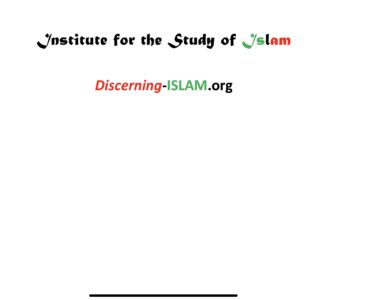
The Ottoman Empire
Its Origins And World Conquests
The Ottoman empire also had its origins in the two great trends of earlier centuries: the Turkish migrations and the post-Abbasid reconstruction of state and society, which provided the institutional and cultural precedents for later Ottoman society. The legacy of Persian monarchical, Byzantine and Roman, Seljuk Anatolian, and Mongol and Timurid precedents interacting with Turkish cultures and transformed by the Ottoman synthesis led to the Ottoman version of high imperial, late Middle Eastern civilization.
At the time of the Ottoman conquest, the people of western Anatolia were slowly converting to Islam. The small mosque of Haci Ozbek, built at Iznik in 1333, two years after the Ottoman sultan Orhan took the city from the Byzantines, exemplifies the combination of Muslim needs and Byzantine building techniques.
The Seljuk invasions had brought Oghuz peoples into Georgia, Armenia, and Byzantine Anatolia in frontier conditions similar to those that existed in northern Iran. In the vanguard of the conquering forces were small bands of nomadic peoples under the leadership of beys (warrior chieftains) and Sufi holy men (babas). Like the tribes of northern Iran, these small bands were likely to have been groups of allied families and clients of an admired or venerated chieftain. The Sufi babas not only provided military leadership, they helped to organize a viable community life in the new territories. These holy men established residences, brought lands into cultivation, built hospices, mills, and schools, mediated disputes, and created the infrastructure of a settled life among migrant warriors. In the wake of the conquering bands came the Seljuk nobility, which set about to construct a centralized state on the model of those that had been created by Seljuk family elites in Iran and Iraq. The Seljuks built up slave forces, administrative cadres, and an Islamic religious infrastructure. Scholars were invited from Iran; qadis (judges) were put into office, colleges were built, and professorships were endowed.
The Ottomans ruled the greatest of Muslim empires, which extended into Europe, North Africa, Egypt, Arabia, Mesopotamia, Iran, and Anatolia. In 1529 Ottoman forces unsuccessfully besieged Vienna, and Ottoman-Hapsburg wars continued for more than 150 years without major territorial change. In the summer of 1683, an Ottoman army of 150,000 unsuccessfully attacked the city, marking the beginning of the end of Ottoman domination in eastern Europe.
A consequence of the activities of both the state and the migratory Sufi influences was the eventual transformation of Anatolia into a Muslim society. Under Seljuk rule (1071–1243), much of the Greek, Armenian, Georgian, and Syrian population was progressively converted to Islam. The weakening of the Byzantine state, the decline of the orthodox church, and the breakdown of Anatolian society in the face of conquest facilitated the ultimate conversion of the region. The socially constructive measures taken by the conquerors, their tolerance of non-Muslim peoples, and the many common points of popular Islam and popular Christianity — Christians and Muslims revered the same saints and holy places and shared magical and superstitious beliefs as well as common monotheistic and ethical principles and Biblical lore — worked over the centuries to create a Muslim majority.
Sufis played an important role in these conversions. They were generally more accepting of a great variety of religious practices and beliefs, whether Muslim or not, as possible routes to God. Sufis also organized residences as centers of social service and assistance to ordinary people. The Bektashi Sufi order in the rural areas, Mevlevi Sufis in the cities, and in the smaller towns akhis (young men providing charity to the poor and to travelers) created the devotional, charitable, educational, and communal environment that led to the Islamic conversion of Anatolia. Although there would later be substantial conversions in the Balkans too, there the majority remained Christian, largely because of the smaller Turkish population and because of the Ottoman policy of supporting and using the Balkan churches as an administrative convenience.
Although effective in its domains, the Seljuk Turkish system of expansion and occupation generated chronic tension between the central state and a host of peripheral nomadic principalities and warrior bands. Although the state tried to consolidate its power, the outlying peoples sought to maintain their autonomy. This impelled many of them to further expansion in western Anatolia at Byzantine expense, as the local chieftains sought to enhance their power, win glory for Islam, and maintain their distance and independence from the Seljuk state.
The Ottoman empire had its origins in just such a band of frontier warriors operating in late thirteenth-century western Anatolia. Ertugrul, who may have died around 1280, was the founder of a dynasty that over two centuries, not swiftly but ineluctably, first conquered Bursa in western Anatolia in 1326, crossed the straits of Gallipoli in 1345, conquered what is now Bulgaria, Macedonia, and much of Greece, and defeated the Serbian empire at the Battle of Kosovo in 1389. On the basis of their Balkan conquests, the Ottomans turned eastward and absorbed Muslim-ruled Anatolia as well. In 1453 the Ottomans seized Constantinople, bringing to an end the eleven-hundred-year tenure of the Byzantine Empire and establishing themselves as successors to the Roman Empire.
The conquest of Constantinople was both the capstone of previous Ottoman achievements in war and the opening of a new phase in Ottoman ambitions. Mehmed the Conqueror (r. 1444–46, 1451–81) saw himself as successor to Roman emperors and Arab caliphs. His victories realized age-old Turkish ideas of a destiny of world domination, the imperial ambitions of the Roman empire, and Muslim jihad and expansion of the domain of Islam. With the conquest of Constantinople, the Ottomans redoubled their ambitions. The conquest of the Balkans opened the way for a two-century-long struggle against the powers of Europe. The Ottomans were opposed by the Habsburg emperors of Spain, by the Netherlands, by Austria and Hungary, and by the czars of Russia. The wars unfolded along three principal fronts. In central Europe the Ottomans pushed beyond the Danube River and absorbed Romania by 1504. Belgrade was taken in 1520 and Hungary came under Ottoman rule in 1529, and in the same year the Ottomans besieged but failed to take Vienna. Without major territorial changes, Ottoman-Habsburg wars continued for another century and a half until the second Ottoman siege of Vienna in 1683.
In the Mediterranean the Ottomans waged an equally vast struggle. They seized Algiers in 1529 and Tunis in 1574. In 1580 they negotiated an historic truce with Philip II of Spain that confirmed the boundaries of their domains. This was a fateful agreement because it still marks the boundaries between the Christian and Muslim parts of the Mediterranean. In the north the Ottomans and Russia struggled for control of the steppes beyond the Black Sea and the regions between the Black and the Caspian seas. While the Ottomans held Romania and the Crimea, the Russians dominated the lower Volga region. The struggle continued until 1676, when for a short time the Ottomans consolidated their control of the Black Sea, the steppes, and part of the Ukraine. This was the apogee of their expansion in northern Europe.
Mehmed and his successors brought the Ottoman domains eastward to the borders of Iran, absorbed the Arab provinces and North Africa and the holy places of Arabia, and they carried their ambitions into the Indian Ocean, fighting the Portuguese for control of the spice trade. Ottoman expansion, beginning in western Anatolia, continued for three centuries until the Ottomans had brought southern and eastern Europe as far as Vienna; the northern steppes of the Black Sea as far as the Ukraine; Anatolia to the borders of Safavid Iran; and the Arab countries, Egypt, Yemen, and North Africa as far as the borders of Morocco, under their control. This was the greatest of the Muslim empires. Much of Ottoman history was shaped by their extraordinary commitment to conquest in the name of Islam. The Ottoman wars gave them a reputation among Muslims as the greatest of Muslim states devoted to the jihad. In Europe they left the reputation of the scourge of God and a terror for centuries. The image of the ferocious Turk lives on today.
The Ottoman success can be attributed to a number of considerations. The first was the tactical advantage of their frontier location and the skill with which they seized locations that were important to administration, communications, and trade. Also the Ottomans kept their territories intact under a single heir as opposed to the practice of most of the rival principalities, which divided territories among the descendants of the ruler. Their political flexibility in creating alliances across religious, ethnic, and tribal lines and among nomadic and settled communities was another factor in their favor. So too was the ghazi (frontier warrior) ideology, which motivated them to wage jihad in the name of Islam and self-interest, and justified a flexible policy in dealing with allies and enemies.
Yet in the last analysis the Ottomans owed their success to the policy of strengthening the hand of the dynasty and the central state as opposed to that of the Turkish warrior leaders. The Ottomans were the greatest of Middle Eastern conquerors, in part because they ran the most highly centralized imperial state in the region’s history. They eliminated the frontier warriors and warlords, babas, and tribal chieftains. They suppressed independent local dynasties and replaced the pre-Ottoman elites with Ottoman functionaries. With the conquest of Constantinople, the centralist tendency won out completely. A nomadic conquest was transformed into an Islamic monarchy. The ruler was re-conceptualized from patriarch and elder to monarch and emperor. The levee en masse of tribal peoples was replaced by slave and client forces; the boon companions and warrior cohort of early days by professional administrators.
The Ottoman Empire: Its Origins And World Conquests
803 – 011
Home
Last Updated: 04/2022
See COPYRIGHT information below.



